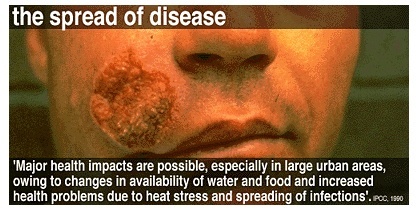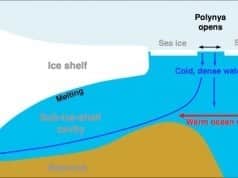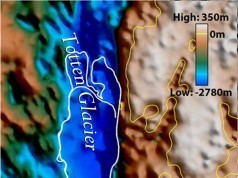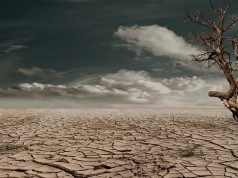
Art Horn, writing at the Energy Tribune, calls our attention to a Greenpeace document titled The Climate Time Bomb. It was written 17 years ago – in 1994 – but it may as well have been yesterday.
The dramatic language, the glass-is-always-half-empty perspective on the world, the blind faith in the Intergovernmental Panel on Climate Change (IPCC) – it’s all there.
Back in 1994, Greenpeace had monitored “extreme weather events” and had already concluded from this catalogue of disasters that:
the first impacts of human-induced climate change are in fact already being felt.
Seventeen years ago, well before the bulk of current scholarship was even in the grant application stage, Greenpeace had already decided that:
Many plants and animals will face extinction.Entire island countries in the Pacific may disappear under the sea.
Even more telling, nearly two decades ago Greenpeace was already declaring that the problem wasn’t a shortage of reliable, scalable, non-carbon-dioxide-emitting energy sources but old-fashioned apathy:
Solutions to global warming do exist – the clean energy alternatives and the energy saving processes only require political will to be implemented.
This, of course, is exactly what these people are saying now. In 2008 a Greenpeace publication on renewable energy featured a huge pullout quote (see page 3) that read:
will we look into the eyes of our children and confess that we had the opportunity, but lacked the courage? that we had the technology, but lacked the vision?
But as the brouhaha over the recent IPCC renewable energy report demonstrates, it is only idealistic young people and groups such as Greenpeace that think such technology exists even today.
Moreover, the most optimistic estimates of renewable energy depend on a rather large fudge. One has to include the burning of animal dung by the poorest of the poor within one’s definition of renewable energy. As the person who blogs at ClimateQuotes.com observes:
Traditional biomass means cooking on wood stoves, it means difficult wood collection (done mostly by women), it means smoke inhalation and deforestation. Basically, traditional biomass is another way of saying abject poverty. It means no access to energy at all. Calling traditional biomass renewable energy is more than a strech.
If one spends a few minutes clicking through that 1994 report it becomes clear that Greenpeace has long been in the habit of making dire predictions. When those predictions fail, this organization carries on as if nothing ever happened.
This means it doesn’t learn much. Like a mindless furry rodent on a hamster wheel it continues on and on and on.
In 1994 Greenpeace told us coral reefs were “under assault” and implied that warmer ocean temperatures were causing bleaching. Eager to alarm everyone Greenpeace declared:
A severe coral bleaching episode is reported in the Tahiti lagoon, possible [sic] linked to warmer-than-normal water. Local experts predict 100 per cent bleaching by the end of May 1994.
That sounds grim. But less than 10 years later, when an IMAX film titled Coral Reef Adventure was released, it contained breathtaking footage of healthy Tahiti coral. According to the film’s website Tahiti’s coral continues to attract divers and snorkelers from around the world.
Back in 1994 Greenpeace implied that the fact that some insurance companies had gone out-of-business was proof the apocalypse was imminent. This section is a wonderful, early example of how activist groups have found it convenient to align themselves with certain business interests (and let us not be confused: insurance is, indeed, big business).
If you’re wondering how the insurance-companies-headed-for-oblivion prediction turned out, I recommend a series of articles that won US journalist Paige St. John a Pulitzer Prize for investigative reporting back in May. By the time you’ve finished reading them your sympathy for the insurance industry may be somewhat diminished.
(For the short version, see this blog post in which I discuss how the math that resulted in consumers paying $82 billion more in insurance premiums was dreamed up. Hint: it included a four-hour informal discussion with four climate experts – whose predictions were, in retrospect, rather wide of the mark.)
One of the more distressing parts of that 1994 Greenpeace report is the section on human health. It’s important to remember that the IPCC’s first health chapter didn’t appear until 1995. It was so badly botched that Paul Reiter, who has devoted his entire professional life to the study of diseases spread by mosquitoes – including malaria – later described it as “amateurish.”
Nevertheless, in 1994 Greenpeace just knew that climate change would lead to more disease. Its report includes a closeup photo of a person with a large open sore on their face, and declares that:
Our health is threatened by climate change. Malaria, asthma, encephalitis, tuberculosis, leprosy, dengue fever and measles are all expected to become more common.
How does Greepeace know this?
- because Australian officials “believe hotter summer temperatures may be contributing” to an increase in malaria
- because US researchers think the discovery of a new strain of mosquito suggests that these mosquitoes “may spread rapidly in a global warming world”
- because a UK government report “suggests that malaria and other tropical diseases, and even bubonic plague, could be reintroduced to the UK as a result of global warming. ” [italics in all the above added]
This is all that Greenpeace requires. Beliefs and suggestions – nothing more. Greenpeace is happy to take mere possibilities and translate them into the confident statement that Our health is threatened by climate change. It feels no shame in adding a lurid photograph which, one supposes, is intended to imply that we’re all fated to become disfigured if we don’t get with the Greenpeace program.
What does all of this add up to?
It says that Greenpeace is a fearmonger. It demonstrates that Greenpeace has spent the past 20 years trying to frighten us.
One wonders if these people will ever look into the eyes of their children and confess that, rather than getting a real job, they chose instead to blight the childhoods of youngsters everywhere with hideous images and terrifying tales.





